 |
 |
| The Skies of Litchfield |
|
 |
 |
 |
| The Skies of Litchfield: Transit of Venus. |
It all depended on whether the clouds broke for you.
June 5, 2012 Venus passes in front of the sun -- for the last time in our lifetimes.
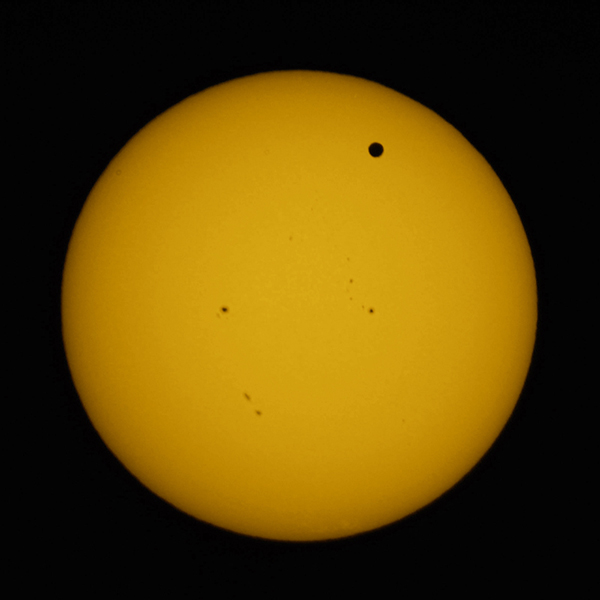
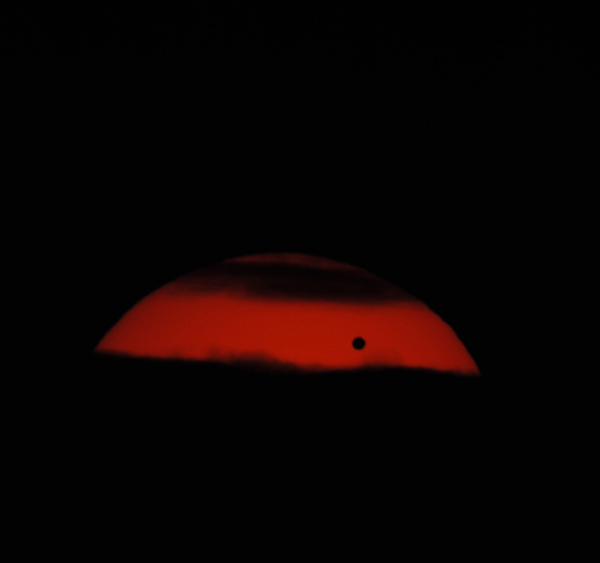
 |
 |
 |
| The Skies of Litchfield: ISS and Discovery. |
Shuttle Discovery on its final flight, just after undocking.
March 7, 2011 Shortly after undocking, shuttle Discovery is about 6 seconds in front of the International Space Station in orbit. It's always a special sight to see two spacecraft with people aboard together in the sky.

 |
 |
 |
| The Skies of Litchfield: Venus and Mercury. |
Venus and Mercury in the west, just after sundown.
April 1, 2010 Venus with Mercury to its lower right. This is about as easy as spotting Mercury ever gets. The two planets are closest to each other (visually, not in actual distance) April 3-4.
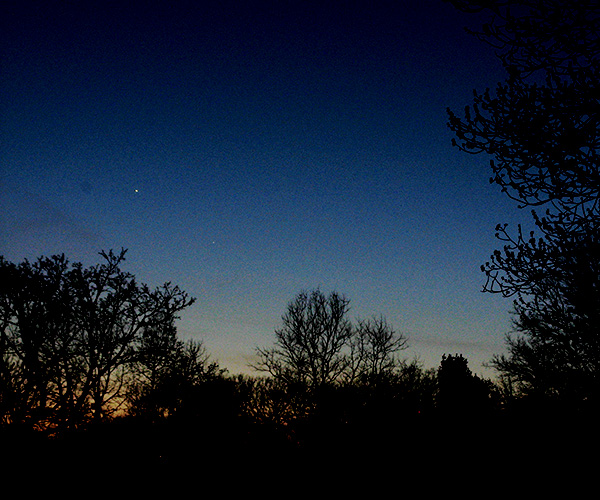
March 8, 2010 Venus at center in evening twilight. Above and to the right the International Space Station can be seen (moving to the upper-right).
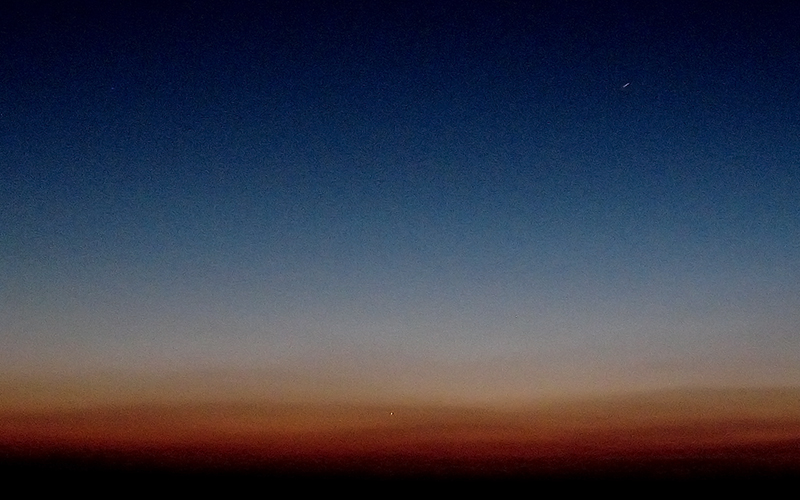
 |
 |
 |
| The Skies of Litchfield: A Penumbral Eclipse of the Moon |
A very subtle eclipse on the night of August 5-6.
August 6, 2009 Below are photos of the moon one night before the eclipse and during it. The air was thick the night before, giving a deep orange color, even though the moon was higher above the horizon at the time. Can you see any darkening (towards the lower right) from the penumbral eclipse in this photograph? None was noticed by eye at the time.
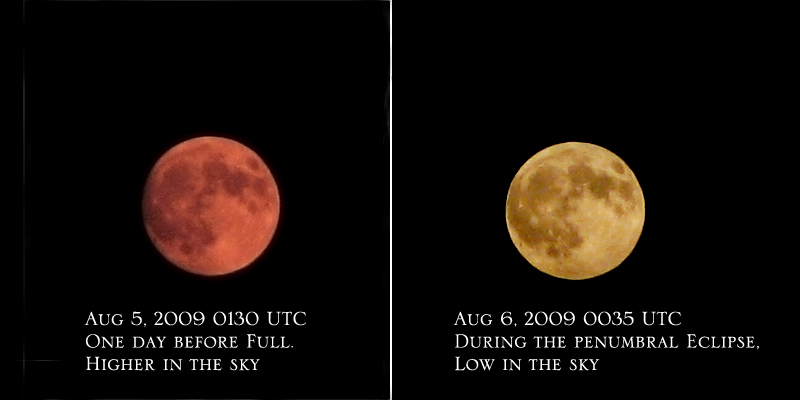
 |
 |
 |
| The Skies of Litchfield: ISS approaches Orion |
The International Space Station approaches Orion.
March 15, 2009 The space station's light is broken by tree limbs as it approaches the constellation Orion, low in the evening sky.
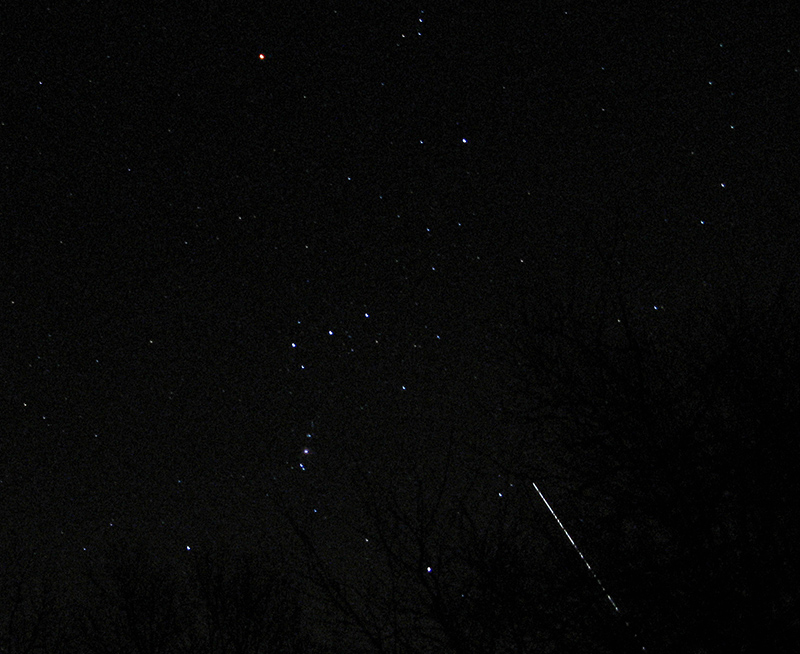
 |
 |
 |
| The Skies of Litchfield: The Moon, Venus, and Jupiter |
The brightest objects in the night sky — together.
December 1, 2008 Clear skies on the second night of this grouping. It's a lucky accident that the moon is close by as these planets are at their closest in our sky (they're not close physically, just from our point of view).
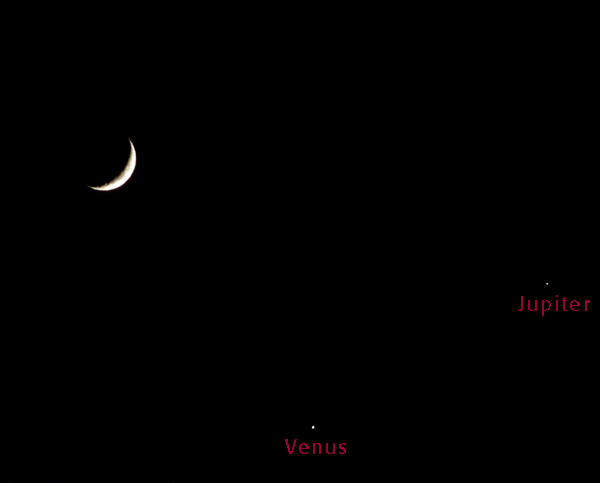
 |
 |
 |
| The Skies of Litchfield: ISS/Endeavour |
The shuttle Endeavour docked to the International Space Station.
March 21, 2008 Moving right to left in this 15 second exposure the docked shuttle/ISS combination emerge from the earth's shadow into sunlight, moving northwest to southeast in the morning sky over Litchfield Borough.
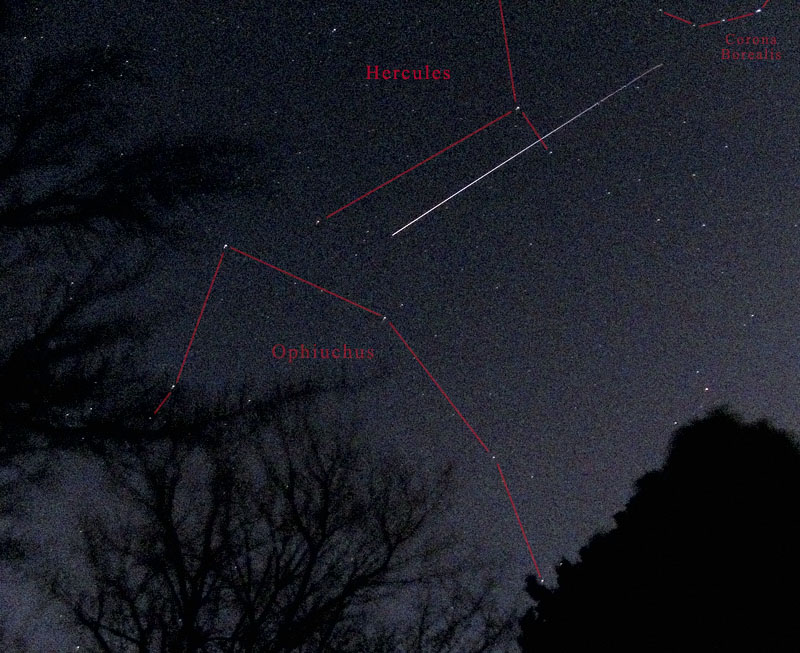
 |
 |
 |
| The Skies of Litchfield: Lunar Eclipse |
Total Lunar Eclipse on the evening of February 20.
February 20, 2008 The mostly clear skies in Litchfield County offered a great view of the subtle colors of the total lunar eclipse. This picture includes Saturn to the left and Regulus above.

 |
 |
 |
| The Skies of Litchfield: USA 193 |
This fast moving bright satellite was photographed in evening twilight over western Connecticut about 28 hours before it was destroyed.
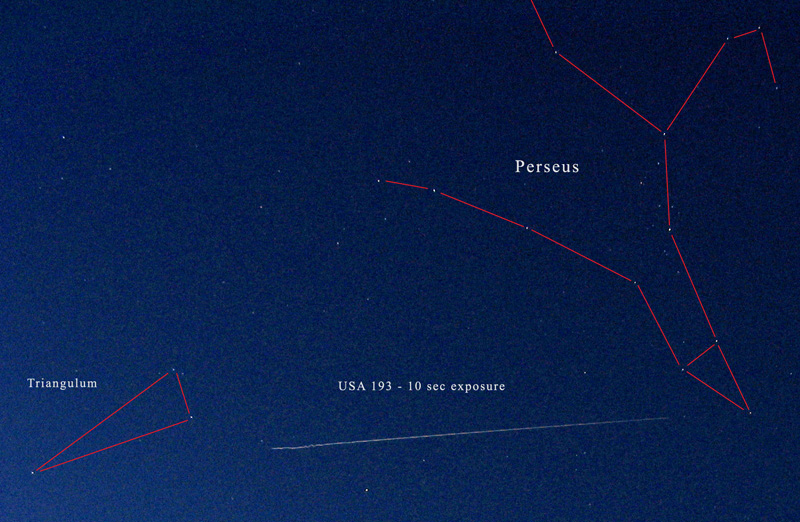
 |
 |
 |
| The Skies of Litchfield: Iridium 76 |
A twilight flare.
February 19, 2008A bright flash from one of the antennae on Iridium 76 makes the otherwise dim satellite easily visible in morning twilight.

|
Yes you can! Here is a list, along with some telescope info, of observatories and astronomy clubs in Connecticut that host viewing events where visitors are welcome:
|
 |
|
